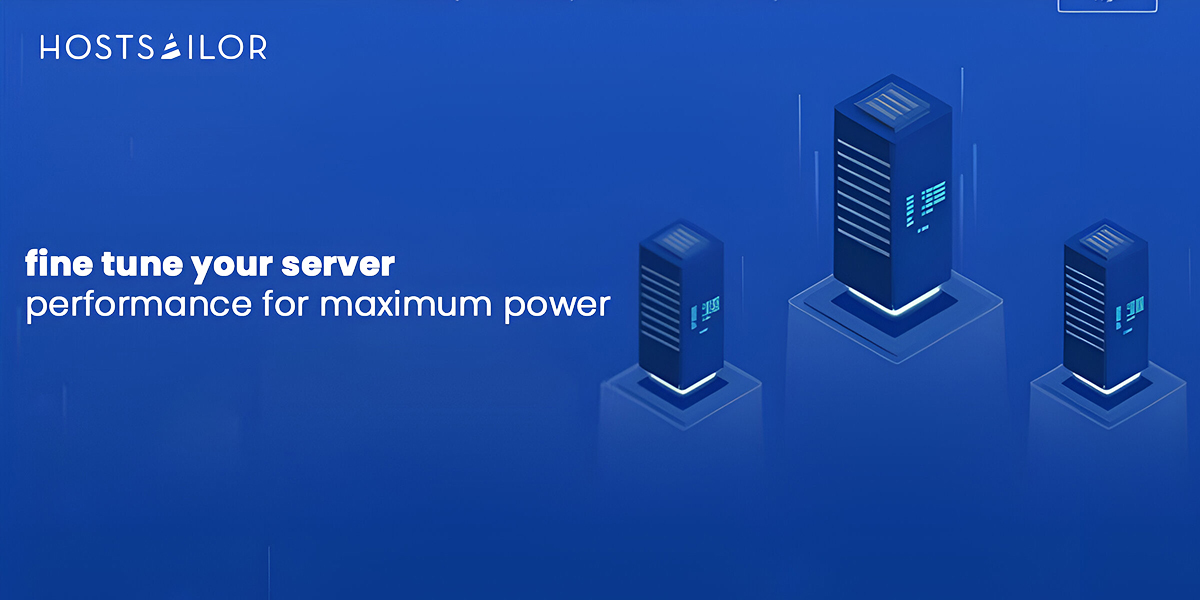
In today’s digital landscape, server performance plays a crucial role in determining the success of online businesses and applications. A well-optimized server delivers lightning-fast response times, ensures seamless user experiences, and empowers businesses to operate at peak efficiency. Conversely, sluggish servers can lead to frustrated users, lost productivity, and ultimately, a negative impact on the bottom line.
This article delves into the intricacies of fine-tuning server performance for maximum power. We’ll explore the key factors that contribute to server performance, identify potential bottlenecks, and provide actionable strategies for optimization.
Whether you manage a small business website or a large-scale enterprise application, these insights will equip you with the knowledge and tools to unleash the full potential of your server infrastructure.
Why Server Performance Matters
Server performance has a significant impact on various aspects of online operations:
- User Experience and Satisfaction: Slow loading times, unresponsive applications, and frequent downtime can significantly hinder user satisfaction. In a world where users expect instant gratification, a poorly performing server can drive them toward competitors.
- Business Efficiency and Productivity: For businesses, server performance directly affects internal operations. Delayed responses, sluggish applications, and system crashes can impede employee productivity, hinder collaboration, and ultimately lead to missed deadlines and lost revenue.
- Cost Optimization and Scalability: Inefficient servers often require additional resources, such as increased hardware or software licenses, to compensate for performance issues. This can lead to unnecessary expenses. Conversely, a well-optimized server can handle increased workloads without requiring significant resource upgrades, ensuring cost-effectiveness and scalability.
Identifying Performance Bottlenecks
Before implementing optimization strategies, it’s crucial to pinpoint the root causes of performance bottlenecks. Here are some key areas to analyze:
- CPU Usage Analysis: Monitor CPU utilization to identify if your server is constantly running at high capacity. This might indicate the need for a CPU upgrade or process optimization.
- Memory Usage Monitoring: Keep an eye on memory usage to ensure your server has sufficient RAM to handle current workloads. Insufficient memory can lead to slowdowns and system crashes.
- Disk I/O Performance Evaluation: Analyze disk access times and throughput to determine if your storage system is a bottleneck. Consider upgrading to SSDs for faster read/write speeds.
- Network Traffic Analysis: Monitor network traffic patterns to identify potential congestion or bandwidth limitations. Optimizing network infrastructure and implementing load balancing can improve network performance.
Strategies for Server Performance Optimization
Once you’ve identified the performance bottlenecks, you can implement a combination of the following strategies to optimize your server:
Hardware Upgrades and Maintenance:
- CPU and RAM Expansion: If your server is consistently maxed out, consider upgrading the CPU and RAM to handle increased processing demands.
- Storage Optimization with SSDs: Replacing traditional HDDs with SSDs can significantly improve disk access speeds and overall system responsiveness.
Software Optimization:
- Operating System Tuning: Fine-tune your operating system settings to optimize resource allocation and prioritize critical processes.
- Application-Specific Optimization: Analyze application-specific settings and configurations to ensure they are optimized for your server environment.
Resource Management and Monitoring:
- Virtualization Technology: Utilize virtualization technologies to consolidate multiple virtual machines on a single physical server, maximizing resource utilization.
- Load Balancing and Clustering: Implement load balancing and clustering techniques to distribute workloads across multiple servers, ensuring scalability and high availability.
Advanced Techniques for Power Users
For advanced users seeking to further optimize their server performance, consider these techniques:
- Containerization and Microservices: Containerization technologies like Docker can isolate applications and their dependencies, leading to faster deployment and resource management.
- Cloud-Based Infrastructure: Migrating your server infrastructure to the cloud can offer on-demand scalability, automatic resource allocation, and access to cutting-edge hardware and software.
Conclusion
Fine-tuning server performance is an ongoing process that requires continuous monitoring, analysis, and optimization. By implementing the strategies outlined in this article, you can unlock the full potential of your server infrastructure, ensuring a seamless user experience, increased business efficiency, and optimal cost-effectiveness.
Remember, a well-optimized server is not just a technical achievement; it’s a strategic investment that empowers your online presence to thrive in today’s competitive digital landscape.
FAQs
- What are some common server performance monitoring tools?
There are numerous server monitoring tools available, including popular options like Nagios, Zabbix, and New Relic. These tools provide real-time insights into CPU, memory, disk, and network performance, allowing for proactive identification and resolution of potential issues.
- How often should I monitor server performance?
Server performance monitoring should be an ongoing process. It’s recommended to set up automated alerts to notify you of any sudden changes or performance deviations, enabling you to take prompt corrective action.
- What are the potential risks of over-optimizing a server?
While optimization is crucial, over-tuning your server can lead to unintended consequences. It’s essential to strike a balance between maximizing performance and ensuring system stability. Always test any significant changes thoroughly before implementing them in a production environment.
- Is it always necessary to upgrade hardware for better performance?
Not always. Often, software optimization and resource management techniques can yield significant performance improvements without requiring hardware upgrades. However, if your server is consistently reaching its hardware limitations, upgrades might be necessary to accommodate future growth and demands.
- What are some additional resources for learning more about server optimization?
Numerous online resources and communities offer valuable insights and tutorials on server optimization. Consider exploring documentation provided by your operating system vendor, consulting online forums like Stack Overflow, and attending industry-specific conferences and workshops.